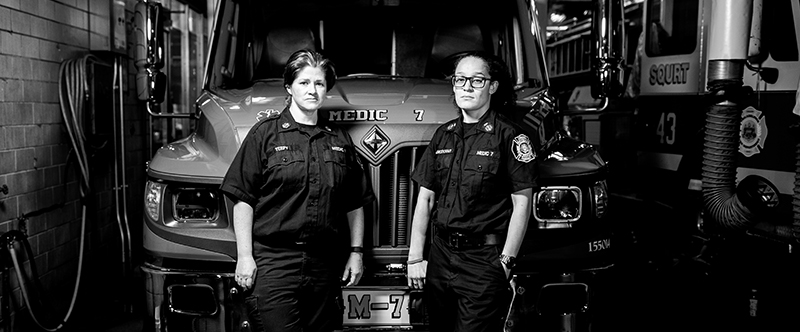
Workplace Violence (WPV) Prevention
While much of the work by the Center for Firefighter Injury Research and Safety Trends (FIRST) has focused on the injury and safety outcomes of firefighters, our research focus has grown to be inclusive of fire-based Emergency Medical Services (EMS). In the United States, EMS is responsible for as much as 70 to 90 percent of the work done by fire departments. With calls increasing approximately 20% each year (NEMSIS, 2016), EMS responders are increasingly expected to do more with less. Increased call volume and exposure to patients increases the risk for injury and illness for EMS responders. Read more about how increased call volume and other industry strains affect EMS responders in A Strained 9-1-1 System and Threats to Public Health.
Despite working in a profession characterized by helping people, an estimated 2,100 EMS workers visited U.S. hospital emergency departments in 2011 to treat an injury resulting from patient violence (CDC, NIOSH Workplace Safety, 2013). Previous research by the FIRST Center confirmed the issue of patient violence by using data from the National Fire Fighter Near-Miss Reporting System (NFFNMRS), a secure and non-punitive reporting system created by the International Association of Fire Chiefs. We reviewed emergency medical call reports and analyzed their narrative text fields. Of 185 reports, violence (n=48) was the most commonly identified mechanism of near-miss or injury. We found that emergency medical responders were threatened or assaulted by patients, as well as family members and bystanders. Common underlying factors included: violent patients, patients with mental health issues, and patients with particular health conditions (e.g. seizure, hypoglycemia). Learn more about the full scope of workplace violence against EMS responders in the Violence Against Fire-Based EMS Responders FACT SHEET.
From a local perspective, this problem of violence affects the Philadelphia Fire Department (PFD)--an urban, inner city department serving 1.5 million people. Data from the Firefighter Injury Research and Safety Trends (FIRST) project served as a catalyst to investigate this particular issue more deeply. We gathered injury data from the Philadelphia Fire Department Safety Office for the period 2005-2011 and analyzed it by cause of injury stratified by males and females. Most causes of injury were of equivalent proportion between males and females. However, the “struck by” category showed a disproportionate percentage of females (22%) who reported this cause of injury compared to their male counterparts (9%). To investigate the “struck by” injuries more deeply, the narratives from the first reports of injury were reviewed. These narratives often referred to violence by a patient as the injury cause. However, most females in the PFD are paramedics, so we stratified by occupation and the gender difference disappeared. But paramedics (compared to firefighters) were 14 times more likely to experience a struck by injuries from a patient. Read more about violence against EMS responders in Expecting the Unexpected: A Mixed-Methods Study of Violence to EMS Responders in an Urban Fire Department.
To view the media's perspective on patient-initiated violence to paramedics and EMTs, read "Banged Up and Burned Out: Assaults by Patients Against Paramedics & EMTs".
Our Stress and Violence to fire-based EMS Responders (SAVER) Project works to address what first responders have been saying for decades: workplace violence (WPV) is a problem.